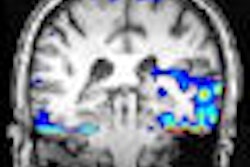Monday, November 30 | 10:50 a.m.-11:00 a.m. | SSC11-03 | Room E450B
If you're looking for a reliable predictor of recurrence of giant cell bone tumors, MRI is a much more effective modality than plain radiographs, according to Korean researchers at Seoul National University Hospital.Their study retrospectively reviewed preoperative MR images of 46 patients with more than two-year follow-up from 2000 to 2007. Through MRI, recurrence was found in 15 (33%) of 46 patients after analyzing cortical breakage, subchondral bone extension, perilesional bone marrow edema, surrounding soft-tissue enhancement, and cystic change.
"Cortical breakage with surrounding soft-tissue extension was observed on MR imaging, but was not seen on the plain radiographs," said co-author Dr. Jae Sung Myung. "Therefore, the results of this study showed that MR imaging analysis of cortical breakage provided an accurate assessment of the tumor, prediction of prognosis, and aided in the selection of the appropriate surgical procedures."
Because giant cell bone tumor has a high tendency of recurrence, researchers noted that MRI can help surgeons and radiologists monitor a patient's condition.
"The recognition of prognostic significance of cortical breakage on MR imaging can increase surgical thoroughness brought about by the surgeon's awareness of dealing with a tumor being prone to recur," Myung added.



.fFmgij6Hin.png?auto=compress%2Cformat&fit=crop&h=100&q=70&w=100)




.fFmgij6Hin.png?auto=compress%2Cformat&fit=crop&h=167&q=70&w=250)











